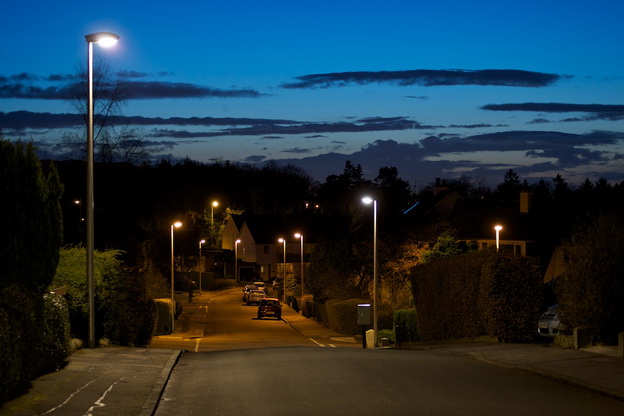New blog post from David Orchard, UK Outdoor Sales Manager at GE Lighting about his observations of the hesitance by some local authorities to upgrade to LED. If financing is no longer a problem, what's the hold up? 1st July, 2014
Streetlighting accounts for 30 percent of the average local authority's energy bill, making inefficient lighting a serious drain on resources. Yet, despite the increased availability of funding options, there is still a lingering hesitation from some local authorities to take the plunge and upgrade their lighting assets. I recently attended Community Lighting 2014 and was keen to try and get an insight into this reticence from some of the other delegates.
We know from previous conversations with local authorities that gaining buy-in from senior management can be the most difficult stumbling block to overcome, as there is still an on-going unwillingness to take on more debt in these times of austerity measures. However the reality is that upgrading to energy efficient lighting and reducing costs are in fact two sides of the same coin.
 |
|
(Photo Courtesy of GE Lighting) |
Despite the initial investment, the savings from upgrading to LED can be as much as 40 to 70 percent, which means the payback period is relatively short – with significantly lower carbon emissions and on-going energy costs as a result. Switching to energy efficient lighting is a robust solution that saves money, energy and carbon, both immediately and throughout the luminaires' long lifetime – in fact, across the UK as a whole this would save £220 million (US $337 million) each year in energy costs.
The pressing need to conserve energy by upgrading to greener technologies means that a number of financing options are now available – many of which are based on the resulting energy savings, meaning they essentially enable upgrades to pay for themselves. Financing is no longer the major hurdle it was once perceived to be, so we must look a little deeper in order to find the true cause of some local authorities' hesitation to upgrade.
One concern we've heard voiced in the past is a lack of confidence about specification issues and the relevant standards. It's true that the absence of industry standard specifications for outdoor LEDs can make wading through the multitude of products available somewhat daunting. When combined with concerns about the long-term viability of some of the more fresh-to-market suppliers, the reasoning behind some local authorities' uncertainty starts to become clear.
 |
|
(Photo Courtesy of GE Lighting) |
In these situations, partnering with a trusted lighting manufacturer that can help with the whole upgrade process is the best way to overcome these initial challenges - from de-mystifying the specifications, to designing an optimal layout for outdoor lighting assets. Choosing an established manufacturer whose products are backed by rigorous testing will also ensure that any guarantees offered are truly worth their salt, as well as increasing the likelihood that the in-situ energy savings achieve what is expected – another critical concern for local authorities looking to make a major investment in their lighting stock.
Increasingly, lighting manufacturers are becoming involved in customer projects from a much earlier stage, by providing an end-to-end service encompassing lighting design, specification and financing support, as well as supply, fit and maintenance. This is certainly the route being taken by GE Lighting.
Despite the hesitation to upgrade to LED shown in some quarters, I was pleased to see that this was not the case at Community Lighting 2014, as the general enthusiasm and willingness to understand more about the issue was apparent throughout. With such potential for both financial and energy savings, lighting truly is the low hanging fruit of the energy efficiency world so it's important that as an industry we provide the support local authorities need to overcome their doubts.
- See more at: http://www.gelighting.com/LightingWeb/emea/news-and-media/illuminated-minds/overcoming_LED_hesitance_in_the_public_sector.jsp#sthash.8FAzeTv3.dpuf





 CN
TW
EN
CN
TW
EN







